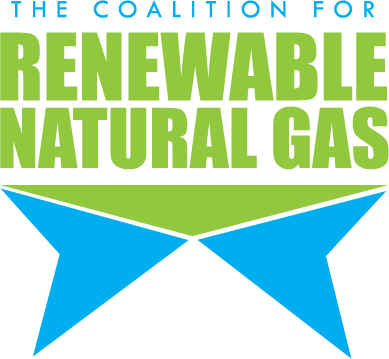It turns out garbage dumps and feed lots both have untapped potential. Come along with us as Johannes Escudero, CEO of RNG Coalition, explains.
Improving California’s Air Quality: Maas Energy Works
California’s dairy industry injects more than $21 billion into the state’s economy and supports 189,000 jobs while accounting for around half of California’s total methane emissions. This presents a conundrum: How do we balance economic prosperity with environmental responsibility?
Anaerobic manure digesters offer one promising answer to this question. Anaerobic digesters address the environmental impact of flush dairies, where manure-laden water is stored in ponds. As the manure is naturally digested by bacteria, methane and other gases are emitted as a byproduct. By creating sealed ponds (covered lagoons) lined with high-density polyethylene and installing gas filtration equipment, dairy farmers can transform these emissions into marketable renewable natural gas (RNG).
Morrow Energy Designed, Manufactured, and Installed New Corpus Christi Renewables Gas-To-Energy Plant Near Corpus Christi, Texas in Industry Record-Setting 6 Months
The development and use of Renewable Natural Gas (RNG) from landfills reduces greenhouse gas emissions, reduces landfill odor emissions, and provides a sustainable energy resource. Additionally, RNG creates new revenue streams for landfill operators and provides economic and environmental benefits to local communities.
Morrow Energy, a leader in renewable energy solutions, is proud to announce the ribbon-cutting of the new Corpus Christi Renewables landfill-gas-to-energy plant on April 10, 2024, at 12:00 PM CT. This state-of-the-art plant, located at the Cefe Valenzuela landfill converts landfill gas to clean renewable natural gas.
CNG Vehicles, Now Mainstream, Remain Popular Options for the Waste Industry
About 15 years ago, a Quebec landfill was struggling with their methane gas emissions and needed help. With technology evolving toward compressed natural gas they turned to the Labrie Group for advice.
“They knew of our expertise working with compressed natural gas for our waste trucks started in 2001, and at that time, 2010, Labrie Environmental Group were already recognized leaders in the waste CNG arena,” said Louis-Charles Lefebvre, regional sales manager.
Chevron, Brightmark JV Opens RNG Facility in Arizona
Brightmark RNG Holdings, a joint venture between Chevron USA Inc. and Brightmark Fund Holdings, has opened its Eloy Renewable Natural Gas (RNG) center, producing pipeline fuel by capturing methane from dairy operations.
Ameresco Begins Construction of Biogas Cogeneration Project in Sacramento, California
Ameresco has announced it entered a nearly $140 million contract to develop and construct an advanced technology biogas cogeneration facility for the Sacramento Area Sewer District located at the EchoWater Resource Recovery Facility (EchoWater Facility) near Elk Grove, California.
This on-site renewable energy facility will beneficially utilize biogas (methane), a byproduct of the EchoWater Facility’s solids treatment process, to produce renewable electricity and heat for the EchoWater Facility through an integrated 13.4 MW cogeneration plant that will utilize fuel cell and engine technology. By incorporating the fuel cell system, the project will have exceptional efficiency and reduced pollutant emissions, making it a clean, reliable baseload dispatchable resource. Additionally, the system will allow for the expandability to produce hydrogen in the future.
Renewable Natural Gas with Farmer Jon Patterson
What do dairy farmers in New York have to do with natural gas? Find out with farmer Jon Patterson.
Low Carbon Fuels, Credit Programs Help Transition Toward Zero-Emission Policies
Bills establishing credit programs for low carbon fuels, including those derived from landfills and other waste sources, are proliferating in state houses around the country.
A clean fuel, low carbon fuel, or clean transportation standard sets a timeline for fuel producers to gradually reduce the emissions, or carbon intensity, of their product, either by blending in existing low-carbon fuels like ethanol or buying credits from producers of fuels that emit even less carbon, like renewable natural gas derived from landfill gas or anaerobic digestion.
Study Analyzes Minnesota RNG Potential; Republic Services, Archaea and Waga Launch Projects
March was a milestone month for the renewable natural gas sector, as New Mexico became the fourth state to enact a clean fuel standard. The bill signing on March 5 came after years of effort from Gov. Michelle Lujan Grisham and is the latest example of a growing trend of states being interested in supporting RNG projects.
A study examining Minnesota’s RNG development potential further underscored the importance of state-level incentive programs. Researchers at the University of Wisconsin-Madison found that RNG from a range of project types could replace about 7.5% of Minnesota’s natural gas use, but: “No projects are financially feasible without state or federal renewable fuel credit programs because direct sale of RNG alone does not cover project costs.”
Amp Americas: Getting Serious About Methane Ahead of 2030 — Why Dairy RNG Deserves a Seat at the Table
American farmers and the companies who work alongside them are feeling growing pressure from customers and policymakers to reduce greenhouse gas (GHG) emissions. As federal priorities and state-level legislation shift toward decarbonization, farmers need the solutions and support to maintain quality outputs while upholding their commitment to the land and the environment. The good news is that we are not without solutions – there are technologies and markets operating today that can drastically reduce GHG emissions and help reach global methane abatement goals ahead of 2030. Now, it’s up to policymakers to take the steps needed to keep these effective, market-based solutions moving forward.
Renewable Natural Gas (RNG) is an immediate solution that has the power to significantly reduce GHG emissions in agriculture. On-farm RNG systems capture methane emissions resulting from dairy farming and other agricultural production and convert it to renewable energy. This technology is the only viable pathway for livestock waste that tackles greenhouse gases and other air pollutants, all while supporting investments in advancing American farmers’ long history of environmental stewardship.

